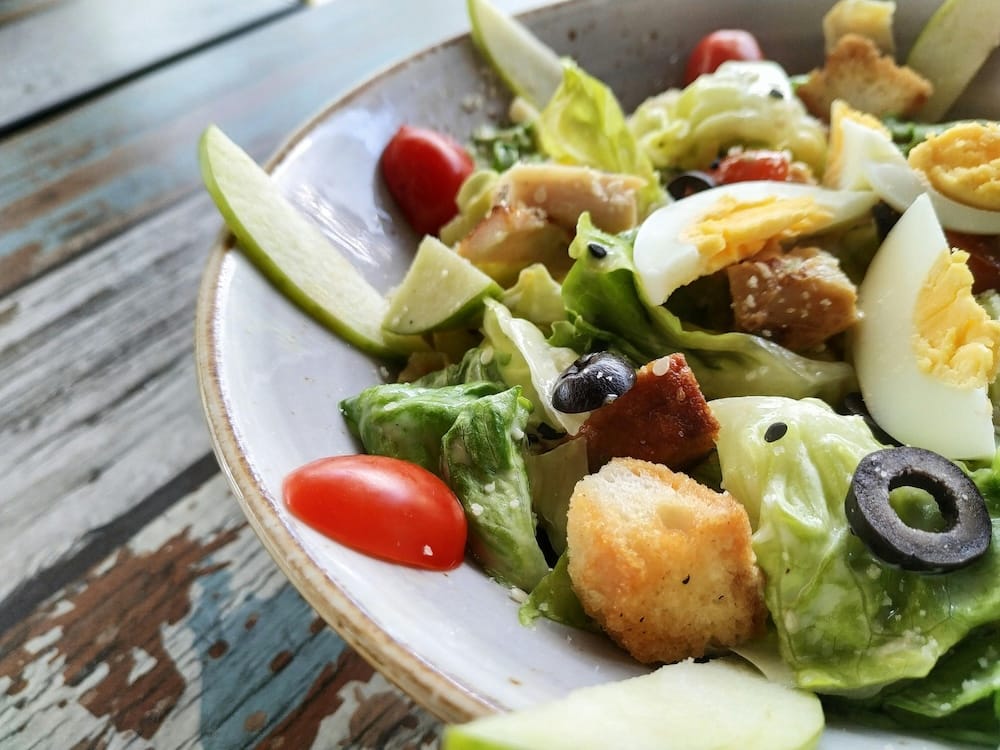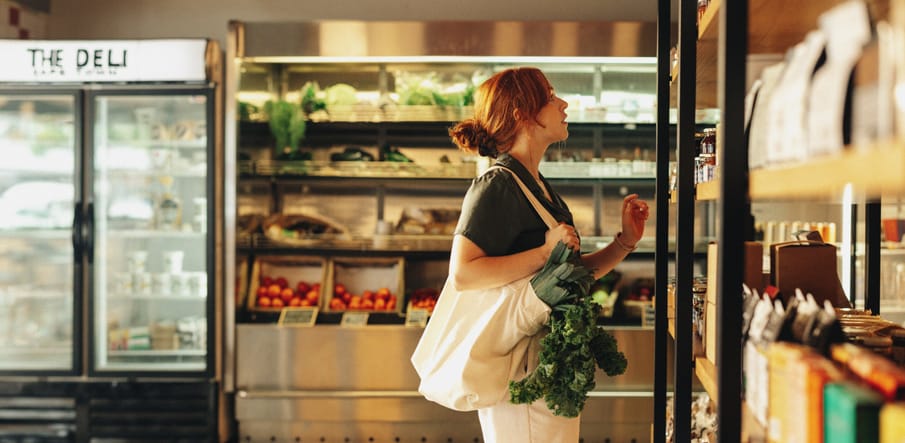An empowering way to connect with what we consume, taking a mindful approach to eating can nurture a healthy respect for ingredients that goes way beyond the dinner table
From nourishing our bodies to a creative outlet, a chance to connect or reminisce, and a moment of self-care, food and cooking hold so much wonderful potential to support our wellbeing. But, as with any daily activity, it’s easy to slip into a monotonous routine of the same meals straight off the supermarket shelf. Enter mindful meal planning to reconnect you with the joy of food.
Perhaps you want to scale up your repertoire of meals, improve your cooking skills, or get extra nutrients into your diet. Or maybe you harbour a desire to explore new cuisines or shift to eating sustainably. Irrespective of where you are on your food journey, mindful meal planning can be a wonderful way to meet those goals. The idea is to connect with what we’re consuming by deepening our awareness of ingredients, provenance, produce, and seasonality, to help us set goals that serve us nutritionally, socially, and emotionally. And there are other benefits too, like learning about ingredients, connecting to people, and diverting away from unhealthy habits.
“Mindful eating helps you to get the most out of your food, with immediate and long-term benefits,” says nutritionist Jane Hickey. “Slowing down to eat mindfully also improves digestion, helping you to absorb all the nutrients from your food, to nourish your physical and mental wellbeing.”

A sensory approach
Intuition – AKA following your gut – is that internal sense that lives in all of us, and is integral to mindful eating. By learning to trust our intuition and listen to our bodies, we can start to identify what serves us nutritionally, and gain better control over our eating habits. Forget what’s trending on TikTok, it’s about following our nose when it comes to selecting what to eat, and leaning towards balanced, healthy plates that open us up to new flavours and experiences.
“A mindful eating plan abandons rules and regulations which categorise foods as ‘right’ or ‘wrong’, giving you the freedom of choice and permission for time and nourishment,” says Jane. “Allow yourself time to enjoy being in the moment with your meals. From the sight of food, to the aroma and taste. It’s about prioritising nourishment and valuing foods for their nutrients.”
Eat the seasons
Pesticides, waxes, and preservatives are often used to preserve foods that are out of season, as vegetables start losing their nutrients straight after they’re picked. So, the quicker they get from field to fork, the better.
Setting an intention to eat seasonally is therefore a win for people and the planet, too. Not only does it directly support local growers, you’ll also be contributing to a reduction in food miles, less consumption of fossil fuels, and fewer carbon emissions.
Start by looking at what’s available locally, and opt for colourful choices that feed your senses and wellbeing. Hot summer days will likely call for refreshing foods like crisp salads with vegetables, fruits, seeds, nuts, and herbs. While in winter, comforting foods like warm porridge and stews can be elevated with spices like cinnamon, ginger, turmeric, and fennel.

Go for variety
Think about flavours you love and begin a culinary exploration of different seasonal dishes to add to your weekly menu.
Jane advises looking at cultural food traditions such as smorgasbord, bento boxes, Buddha bowls, or mezze. “These prioritise both cooked and raw vegetables, and can be easily balanced with a source of good protein (meat, beans, fish, pulses, or dairy) and some healthy fats (like extra virgin olive oil, avocado, or anchovies). If you need a meal to go, a bento box with compartments is the perfect lunch box.”
Take it slow
If meal prep is ‘just another thing to get done’, try reframing it as an opportunity to embrace a slower pace. Change out of your work clothes and put on a favourite apron, along with a playlist or podcast. Switch on your senses and observe the sounds and aromas that release as you chop. Let your mind wander as you watch how the food changes. Then warm the plates, set the table, and take the time to saviour what you’ve created.
Through these small acts, cooking becomes transformational, creating a mindful appreciation for food that provides a wonderful boost for self-worth.
A sense of community
Grabbing something quick on the go, or eating in front of the telly, might have slipped into our routines, but research from the University of Oxford has revealed that the more often people eat with others, the more likely they are to feel happy and satisfied with their lives. Using data from a national survey by The Big Lunch, researchers concluded that communal eating can have a marked improvement on social bonding, wellbeing, and a sense of embedding within the community.
If isolated mealtimes are teetering into the norm, make shifting back to the table an intentional practice. Invite friends over, share a recipe discovery with neighbours, and join local community food groups to share, learn, and upskill in the company of others. All of these things help to nurture a more mindful approach to feeding ourselves and others in our communities.
1. Set your intentions:
Think about why you want to eat mindfully, and note down the changes you want to make. Having a clear intention will help guide your choices.
2. Decide what you want to make:
Preparation is key to mindful meal planning. Think about what you’d like to cook and source ingredients on days off so you can relax and enjoy the process. Remember, a mindful meal plan doesn’t have to be a lengthy list of challenging recipes. Keep it simple, buy seasonally, and look to add in nutrients where you can – an extra spice here, some nuts, herbs, and veg there. Small changes are key.
3. Get to know the growers:
Mindful eating starts with a show of gratitude for farmers and growers who, without, we simply wouldn’t be fed. Support them directly by buying from farm shops and attending PYO sessions. Chances are the produce will be a marked improvement on what you’ll find in the supermarket – putting much-needed money in their pocket, and a delicious meal on the table for you.
4. Make it social:
Check in with loved ones in advance and assign tasks to make it a more sociable affair. There’s a satisfying hum that comes from the routine of people busily working together to put a meal on the table – bringing a sense of unity to the fore through the common goal of creating a delicious meal.
By following these steps, you can create a mindful meal plan that supports your overall wellbeing, and helps you develop a healthy and satisfying relationship with food, people, community, and the environment.


Comments